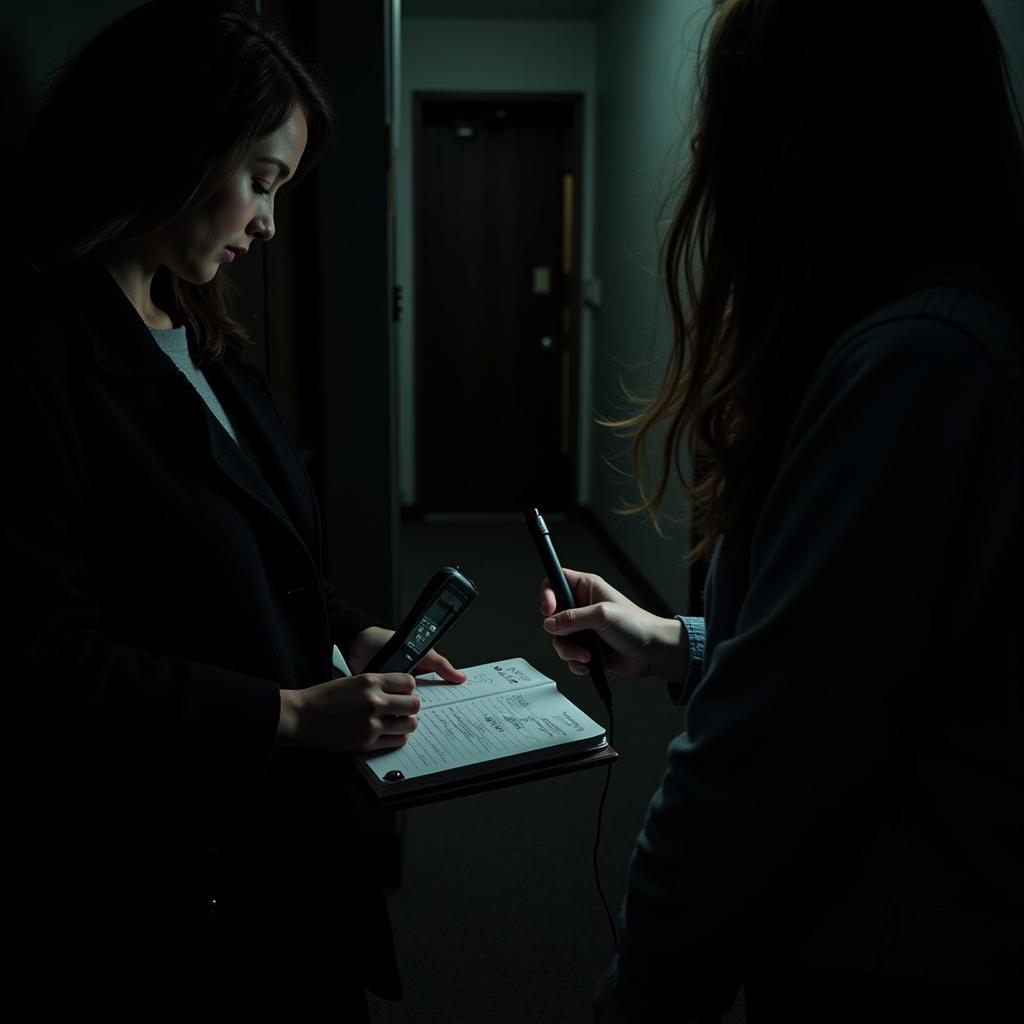Defining research objectives is the cornerstone of any successful investigation, whether it’s exploring the mysteries of the paranormal or delving into the complexities of SaaS market research. A clearly defined objective sets the direction for your research, ensuring that your efforts are focused and productive.
What Does it Mean to Define Research Objectives?
Defining research objectives involves specifying exactly what you intend to achieve with your research. This involves articulating the questions you want to answer, the information you want to gather, and the outcomes you hope to achieve. Think of it like planning a road trip: without a clear destination in mind, you’re likely to wander aimlessly and waste valuable time and resources. Similarly, what is rationale of the research becomes crucial in this stage.
Why is Defining Research Objectives So Important?
Clearly defined objectives provide a framework for your entire research process. They help you stay focused, ensuring that all your activities contribute to your overarching goal. This not only improves the efficiency of your research but also enhances the quality and relevance of your findings. Whether you’re trying to understand the nature of ghostly apparitions or explain evaluation research, clear objectives are essential.
How to Define Effective Research Objectives
Defining effective research objectives is a process that requires careful thought and planning. Here’s a step-by-step guide to help you formulate robust research objectives:
-
Identify your research problem: What is the central question or issue that your research aims to address? For instance, are you investigating the frequency of poltergeist activity in a specific location, or are you exploring the psychological factors that contribute to paranormal experiences?
-
Formulate research questions: Break down your research problem into specific, measurable, achievable, relevant, and time-bound (SMART) questions. For example, instead of asking “Do ghosts exist?”, you might ask “What evidence supports the existence of paranormal activity in this specific location?”
-
Develop hypotheses (if applicable): If your research involves testing a specific theory or prediction, formulate testable hypotheses. For example, you might hypothesize that “Increased EMF readings correlate with reported sightings of apparitions.”
-
Refine your objectives: Review and refine your objectives to ensure they are clear, concise, and aligned with your overall research goals.
Common Mistakes to Avoid When Defining Research Objectives
-
Being too broad: Avoid vague or overly ambitious objectives. For example, “Investigate all aspects of the paranormal” is too broad and unmanageable. Instead, focus on a specific aspect, like “Investigate the reported cases of EVP phenomena in historic cemeteries.”
-
Being too narrow: Objectives that are too narrow can limit the scope of your research and prevent you from exploring potentially interesting avenues of inquiry.
-
Lacking clarity: Objectives should be clearly stated and easy to understand. Avoid using jargon or technical terms that your audience may not be familiar with.
Applying Research Objectives to Paranormal Investigations
Applying rigorous research methodology to paranormal investigation, while challenging, can yield insightful results. Just as a researcher writes a grant proposal to repeat an experiment, defining clear research objectives is crucial for obtaining credible data and conclusions in Paranormal Research. For instance, if investigating a purportedly haunted location, defining objectives like documenting EMF fluctuations, temperature changes, and personal experiences in specific areas can provide a structured approach to data collection and analysis. Remember, even when exploring the unknown, a systematic approach grounded in well-defined objectives enhances credibility. Similar principles apply when conducting saas market research, although the subject matter and research methods differ significantly.
 Documenting Evidence using Research Objectives in Paranormal Research
Documenting Evidence using Research Objectives in Paranormal Research
Conclusion: Defining Research Objectives for Success
Defining research objectives is the first crucial step in any successful investigation, from the tangible to the paranormal. By clearly articulating what you intend to achieve, you set the stage for a focused, efficient, and ultimately rewarding research process. Whether you are exploring the mysteries of the universe or seeking answers to more mundane questions, well-defined research objectives are the key to unlocking valuable insights. If you need assistance, contact us at 0904826292, research@gmail.com or visit us at No. 31, Alley 142/7, P. Phú Viên, Bồ Đề, Long Biên, Hà Nội, Việt Nam. We have a 24/7 customer support team ready to help you.
FAQ:
- What is a research objective?
- Why are research objectives important?
- How do I write a research objective?
- What are some examples of research objectives?
- How many research objectives should I have?
- What is the difference between a research objective and a research question?
- How do I ensure my research objectives are SMART?
Also consider these other related articles: how to write a grant proposal for research.